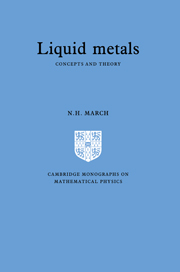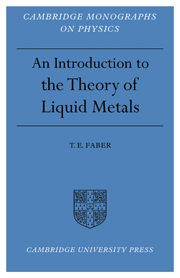Liquid Metals
Liquid metals remain of both fundamental and technological interest and the concepts needed to understand their properties are set out in this book, starting from a survey of the basic experimental facts to be explained. The quantitative theory of liquid pair correlation functions, effective ion-ion interactions, thermodynamic properties and electronic and atomic transport is then developed. The book goes on to discuss inelastic neutron scattering, critical behaviour, magnetism, the liquid/metal surface, binary liquid metal alloys, the two component theory of pure liquid metals, shock wave studies, liquid hydrogen plasmas and the constitution of giant planets.
Product details
February 2011Adobe eBook Reader
9780511870002
0 pages
0kg
This ISBN is for an eBook version which is distributed on our behalf by a third party.
Table of Contents
- Preface
- 1. Outline
- 2. Pair correlation function and structure factors of ions
- 3. Thermodynamics
- 4. Electron screening and effective ion-ion interactions
- 5. Inter-ionic forces and structural theories
- 6. Statistical mechanics of inhomogeneous systems and freezing theory
- 7. Electronic and atomic transport
- 8. Hydrodynamic limits of correlation functions and neutron inelastic scattering
- 9. Critical behaviour
- 10. Electronic states, including critical region
- 11. Magnetism of normal and especially of expanded liquid metals
- 12. Liquid-vapour surface
- 13. Binary liquid metal alloys
- 14. Two-component theory of pure liquid metals
- 15. Shock wave studies
- 16. Liquid hydrogen plasmas and constitution of Jupiter
- Appendices
- References
- Index.




